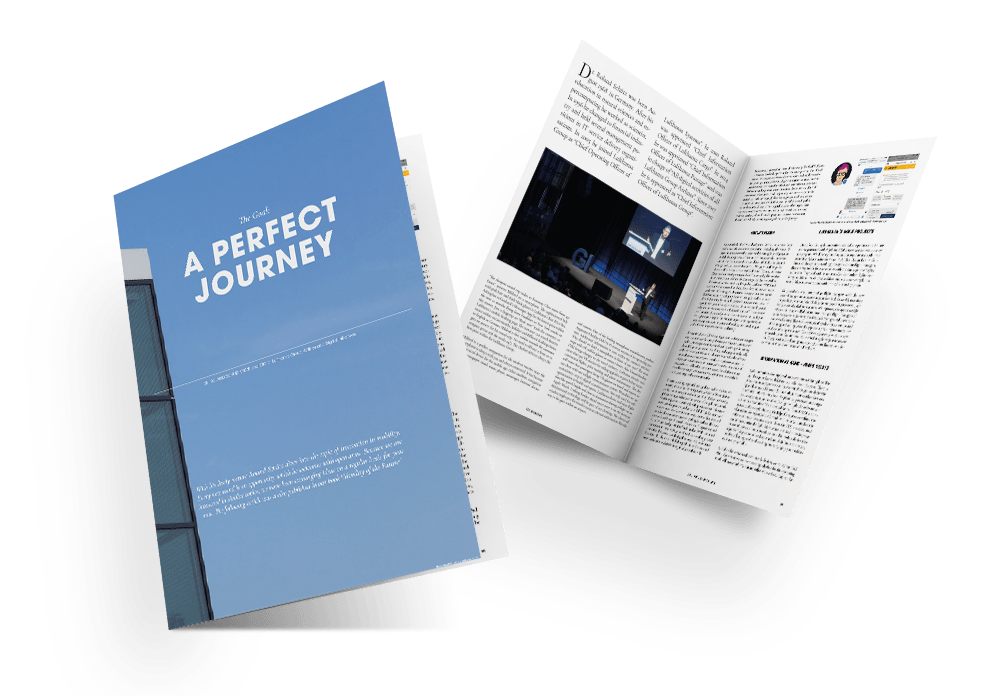The Goal: A Perfect Journey
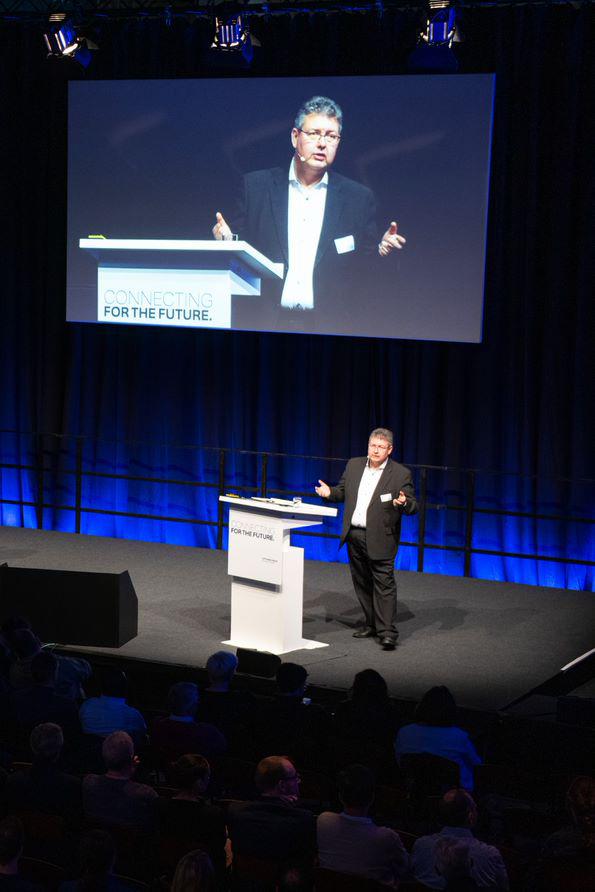
“The cheapest round trip ticket in Economy Class starts from 471 Euros”, answers Mildred on a smartphone. The sophisticated lady with pink hair and thick black glasses is Lufthansa´s Best Price Bot. Asking her in Facebook´s Messenger App for the lowest price within the next 12 months flying from Frankfurt to New York results in this answer. Just a fingertip on “Book now” leads the customer to Lufthansa´s mobile booking page. The customer can search favorite routes within certain months, holidays and different booking classes in English or German. Mildred is fast, within seconds the customer gets an answer for his round trip. No need to fill out a form or to compare prices and she works 24/7. The chatbot delivers always the best price within the Lufthansa Group.

Picture 1: Mildred finds the best price for a Lufthansa flight in Facebook´s Messenger App
Mildred is a perfect companion for the modern traveler since the smartphone is always with you and always connected. It has become the universal device for the mobile age: ticket machine, navigation device, newspaper stand, music player, messenger, Internet device and camera. One of the leading smartphone manufactures pushes Augmented Reality (AR) in its newest version of its operating system. Additional information is seen within the camera´s picture. Why should we hold a smartphone in front of our eyes? The next steps with AR will be glasses or contact lenses. Also Virtual Reality (VR) brings changes to the travel industry. Lufthansa already uses more than 300 VR-devices for selling upgrades at gates before transcontinental flights, pilot training and plane maintenance. The day will come that passengers bring VR-glasses on board and expect to use them with our inflight entertainment system. Wearables are an evolutionary step in digital transformation. Not only used for self-optimization in health and sports. Lufthansa shows real-time flight data like speed, height and time to destination during a flight on an Apple Watch. Looking further ahead smart wear is on the horizon. Miniaturized technology will be part of our clothing. The sleeves of a jacket might give the traveler context relevant information like the way to his gate within an airport.
You don’t need a crystal ball to see all this coming. The GAFAs (Google, Amazon, Facebook, Apple) and several start-ups in our line of business set the expectations of our clients for what´s technically possible. For us as a premium airline it is highly important to meet those expectations or to even overachieve them and to surprise our passengers. To innovate and implement these innovations faster into the chain of travel is one of our goals. It will help to improve our services on the ground and in the air. Especially business people are used to be always in charge and make decisions on their own. But while travelling they are led by others. Giving travelers digital solutions that suggest that they are in control over every situation during the trip will increase their satisfaction with our brand. Helping them to make the most out of travel time will help us reaching our goal: the perfect journey.
Innovate faster
Agile methods of software development help us to become faster and to meet the customers’ expectations. Switching the whole IT-department with more than 2,500 employees to agile development is possible, but not practical. There are two reasons for this: our structure and our core business. Let´s take a look at the Lufthansa Group´s strategy and construction (see pic. 2). We grow in three pillars: There are the aviation services with Lufthansa Technik, Lufthansa Cargo and our catering company LSG. The second pillar consists of the point-to-point airlines like Eurowings and Brussels Airlines. The Network Airlines are in the first pillar. Lufthansa, SWISS and Austrian Airline operate from hubs. These three airlines still work partly with different legacy IT-systems. Dealing with a heterogenic IT-infrastructure is challenging, but even here agile methods are applicable. But going by the agile playbook, it makes most sense to apply it with customer centric solutions. Or better people centric solutions since we also develop solutions for our staff. In these cases the final state of the product or service is somewhat in the fog at the beginning of a project. The reason is simple: Large organizations make assumptions about products and services, but people might wish different things or use services differently.

Picture 2: The three pillars of the Lufthansa Group
The traditional waterfall method might even be faster and cheaper when you know exactly what goal to reach or when no customers are involved. An example is our new weight and balance app for loading planes. It helps our personnel to load cargo and luggage into the belly with a perfect weight balance. It is absolutely clear what the software has to achieve and there are several security restrictions to consider. In this project are no iterations and no trial and error. For those kinds of projects the waterfall method has its advantages. For solutions aiming towards our passengers we already embrace agile innovations and take the necessary steps within our organization.
It starts by shifting responsibilities top down. Agility is about empowering and trusting self-leading teams. Members of the subject areas like sales or marketing and members of the IT-department make up those self-organized teams. One member of the agile team, mostly from the subject area, takes the role of the product owner. This person knows best what goals the product has to fulfill. This does not mean he or she knows exactly what the customer wants or how they will use it. But this uncertainty is covered by the agile methods. The team starts with small steps. In several iterations the IT-department and the subject area develop a Minimal Viable Product (MVP), test it and then improve it. Those cycles go on till we have a working product that fulfills all necessary tasks. During those loops, Key Performance Indicators (KPI) play a vital role. Defining KPIs is the first step and extracting data from analytics is the way to calculate those KPIs.
Lufthansa´s agile projects
One of our first agile innovations started as a partnership. In late 2015 we partnered with Apple and IBM to take part in their industry app program. We chose a ground operation topic to test agile programming. After staying four days in Apple´s Design Lab in California we already had a working prototype for our flight managers. They are responsible for a set of gates with the aim to get the flights out in time. They deal with delays, transfers from other flights, ordering additional meals, overbookings and customer complaints. Some of these tasks were done with printed lists and by phone.
We provided a small group of 40 flight managers with the new smartphone app and requested regular feedback. In weekly meetings the product owner and the IT department together processed user feedback and decided on next steps. We improved the app in weekly releases that is now rolled out to more than 300 flight managers at our hub-airports in Germany. The feedback from ground operations was overwhelming. They saw the practical result after a short period of planning and testing. Also the app was a great improvement for the duties of a flight manager. The positive experience with the new approach spread fast and resulted in another agile project to renew the IT application for planning and steering of our limousine drivers from the First Class Terminal in Frankfurt.
Information at hand – when needed
Agile innovations also improved our operations within a plane. The big black pilot leather briefcase is a relic from the past. There is (almost) no more paperwork in the cockpit. Pilots get an electronic flight folder onto a Microsoft Surface tablet. From weather forecasts to technical information about the plane to passenger and cargo lists – everything is on the tablet. During the flight the software calculates the arrival time. The Estimated Arrival Time (ETA) is nothing new to the cockpit. But with the help of analytics we refined the calculations. We expanded the formula with external data like the traffic situation at the arrival airport. Now the ETA is re-calculated several times during the flight. More accurate arrival times improve the overall service of our network airlines. The mobile device also helps the flying personnel to keep track on their hours in the air, number of landings and total working hours. Roughly 5.000 tablets are in use by our pilots.
Also the cabin crews work with mobile devices, we rolled out iPad Minis. Crewmembers see their working schedule for the upcoming month. All layover information and other work related data can be seen on the device. With a SIM-card the tablet hooks up to a mobile network all around the globe. The user has always the latest work related information. The crew app includes all technical details of the specific plane model: location of first aid boxes and operation manuals for inflight entertainment or the kitchens. More over the app includes the passenger briefing: The purser sees how many infants or people with disabilities are booked. Is a HON-Circle member on board? What is his name? What are his favorites? Maybe it is his birthday today. This enables our crews to a way more personal service on board. Also during a flight the crew receives flight information about connecting flights. They can communicate with colleagues in other planes or on the ground. This works like WhatsApp, but instead of names the messenger uses professional roles like Purser to address the message. The mobile device has become the central tool for our flying personnel. In a separate shell they can install and use private apps on the tablet to communicate with friends and family while on a trip abroad. This increases furthermore the acceptance of working with a mobile device. Looking into the future the flight attendants might even sell upgrades or lounge access with the help of the iPad Mini. Whatever requirements the future might bring for our crewmembers the functions of the app can be expanded. We started this agile project on a few hundred mobile devices. Today 25,000 crewmembers use an iPad Mini on a daily basis.
Growing our IT-infrastructure
This has significant implications for our data centers. The mobile solutions increased the server requests many times. We had to scale our servers and at the same time limit the amount of requests to the necessary. The Lufthansa Group works with legacy systems that were not designed for a mobile world and constant data queries. Instead of every couple hours the mobile solutions request every couple seconds large amounts of information by a large number of users. Therefor we implemented smart caches. For example when a passenger rebooks a route we don´t have to update all information like his name, address and date of birth with every request.
The second key to success with agile innovations in a legacy IT-environment is an application programming interface (API). This way the middleware connects separate silos with new solutions – within and outside our organization. We call it Open API, but it has a distinct separation between internal and external use of data. The API enables our teams to offer software as a service. For example our Innovation Hub in Berlin needs flight plans and other public data via the Open API so that start-ups can connect and try new ideas with real data. For internal use we supply much more data over the API, secured by identity and access management. This was the cornerstone for the crew and flight manager apps. Mildred is a good example for using both layers of the API. It uses a private API to find the best price within our group and an open API to find the nearest airport. It also connects via APIs to external services like Google, Facebook, and the natural language processing platform. This platform uses artificial intelligence to understand the intent of the customer from his written sentence and extracts the relevant data elements for the further processing. (See Pic. 3)

Picture 3: Sketch for service setup and APIs for best price bot Mildred
Software as a service
The Open API is also key in opening our services to third parties. Our Innovation Hub in Berlin scans the start-up scene for new ideas and innovations in the travel market. The Open API enables those young entrepreneurs to test their ideas with real data.
Working with external partners will play a vital role in our future. We can´t develop or test every idea ourselves. The blockchain is a good example. The technology of safe, secure and transparent documentation of business transactions that needs no central clearance institution is appealing to us. We partnered with the Swiss start-up Winding Tree to test the blockchain within our line of business. The travel market is characterized by a multitude of participants. During a journey the traveler deals with ride hailing- and taxi-services, airlines and train operators, rental cars and hotels. Replacing the negotiations with the many operators will make it easier, faster and safer to book packages. We can offer everything along the travel chain, especially the parts before and after a flight. The XML-based data transmission standard NDC (New Distribution Capability) by the International Air Transport Association (IATA) will be supported and the APIs enable the connection of many players to the system. The marketplace for travel service will use its own crypto currency called Lif.
Ownership of your software
Since a digital infrastructure is an essential part of our future business it is important to win back the ownership of our software. We need coding skills right within our IT-department. So far the project managers were busy planning and orchestrating their projects. In an agile world with many sprints and several iterations on the way to a final product we can´t keep the momentum when working with third parties developers. Coding has become a critical skill. Therefor we decided to bundle these skills in our Digital Lab in Gdansk. Lufthansa Systems has already made good experiences working near shore with IT-experts in Poland. Around 30 engineers are working now on agile projects for our IT-department. The product owners are in our hubs in Frankfurt, Vienna or Zurich, but working in the same time zone makes the collaboration much easier than with offshore solutions. If necessary a trip to Gdansk is done within a few hours.
One of our largest on-going IT-projects is called Airline.com. We unify the booking process for Lufthansa, SWISS and Austrian Airline. So far we have three different systems with separate websites and apps. It is always times three when we implement new features. The developers work on a unified group app. This agile project will result in a MVP for SWISS. Austrian Airline will follow and Lufthansa will complete the trio. For us it is one app, but for the customer it will keep the three different brands. The corporate identities with logos and colors will stay the same for each of the airlines.
SMILE – the personalized services
At the same time the new group app will offer the traveler more individual and context relevant information. On basis of affinity- and eligibility-scores our program SMILE suggests personalized products like additional luggage, an upgrade or other food on board. Those scores are calculated with analytics data in a Hadoop-cluster system. We defined 13 different segments from private to business-traveler that will deliver the product suggestions to all available touch points. The Lufthansa app is an important touch point since the smartphone comes along on all trips and we know exactly at what point of the journey the traveler stands. Does he need a ride? Is he open for a chargeable lounge offer during an extended waiting time? This last question illustrates the advantages of agile programming. The product owner believed that travelers would accept a payable lounge offer with short notice when he or she faces a longer waiting period for a connecting flight. But the data showed something different. The buy rate was much higher when the lounge offer was presented earlier during the trip, even ahead of arriving at the lounge airport. In short waves we implemented the knowledge from analytics. The used data also comes from the booking system and our master data management. It keeps track of global events, holidays and also which airports offer lounges.
The more we learn about affinities of a traveler the better we can offer further ancillaries. Besides our analytics model we combine the services with a business rule. For example Lufthansa employees won´t receive a lounge offer. This whole process started with a small team experimenting with data and feedback loops. It grew from there, but now we are at a point of industrializing and professionalizing the product. The methods of agile development helped significantly to grow this service in small steps.
Analytics plays an important role in the agile development of a solution for our ground crews. If a passenger checks-in, but doesn´t make it in time to the gate, the ground crew has to re-open the cargo door and search for the luggage. It is a safety regulation that takes valuable time. The captain often misses his slot for takeoff and will run late at his arrival destination. We analyzed data to find the reasons why people miss connecting flights at our hubs. Obvious reasons are long distances between gates, maybe even changing terminals especially for elderly or handicapped people. Groups always need more time for a distance than single traveler. Knowing the customer and the circumstances to walk through an airport helps us to predict the possibility of being at the gate in time. The ground crew gets the information on their mobile device which suitcases should be put aside and loaded last ¬– or not at all.
Those methods of analytics and also artificial intelligence (AI) will be used in the future for our network planning. We already apply IBM´s Watson in our customer help desk. The AI learns from the agent´s searches for answers and improves the information. The results are quicker and more relevant answers for our customers. This reduces the average time of a customer being on the phone with one of our agents.
A cultural change
Changing the IT ecosystem within an organization starts with people. You need internal evangelists that transport the message into every level of the company. We hold Tech Talks on a regular basis. Speaker from the IT-department present new projects, the audience consists of people from all subject areas. The listeners get an idea what is in development. This fosters cooperation over department boundaries, supports transparency, and allows reuse of solution components.
We aim to implement a culture that welcomes innovation. It is something I call our garage mode since many ideas started in small garages in the Silicon Valley. It is a sharp contrast to our size of over 124,000 employees within the Lufthansa Group. But being innovative is less a question of either agile or waterfall methods of programming than a question of mind. We have to give our developers the freedom and tools to test an idea. Let´s take a look at how children play: It is an important part of growing up. While playing we all learned valuable lessons of what works and what does not. In the digital age everyone is like a child again: Many new possibilities, but no one knows exactly what really works and how customers will use new tools.
Mildred is a good example for “playing” with new tools like a natural language processing platform (NLP). Two of our developers took the freedom to play around with publicly accessible tools. A Natural Language Processing platform translates the users request into intents. In combination with APIs to Google´s geo-location database and the Lufthansa Open API accessing the information about the nearest airport and the best price for a flight, Mildred was born – within days. The two developers tested the bot during public test drives in Frankfurt. The feedback was very helpful, because we think in technical terms like the three-letter code for airports. We also use our standard date format, but people outside of our organization use airport names and many different date formats.
Since Mildred was an idea of the IT-department we had to pitch it to the sales department. When we presented the MVP they liked our initiative. Mildred just had to learn English besides German and fulfill some regulatory requirements before she went live in November 2016. Learning form Mildred and another bot by Austrian Airlines lead to a service bot with the project name Higgins. We bundled the programming knowledge in Basle at our Swiss colleagues. This competence center took the lead in creating a more complex bot for irregularities. When a flight gets canceled the traveler either has to get in line at our service desks at the airport or contact our call center. This applies to hundreds of passengers depending on the size of the plane that won´t take off. Those irregularities make most people nervous. What are the next steps? Will I be on time for my appointment? With the help of the new service bot the traveler is presents with alternative routes to his destination. He can solve the situation himself, just by tapping within the messenger on a later flight or choose an alternative route. During this process he cannot only choose a new flight, but also check-in directly. This saves time and reduces the stress level while travelling. The natural language processing in the background is comparable to Mildred, but Higgins is much more complex and has a different tone of voice. While Mildred has a sense of humor and engages in a little chitchat, the traveler is not in the mood for jokes when his flight got cancelled. This bot will be short, precise and on the spot with his wording.
The next step with bots is from understanding typed text to speech recognition. Alexa, Siri, Google Home and others have already entered the living rooms of our customers. Asking for prices or a flight status, checking-in or rebooking – this all will happen via voice. It is the most natural form of communication for humans. Technically it is no big step for our developers but questions remain: How will customer use it? What do they ask? How do they ask? We have to find out what the customer wants, not what internal processes dictate.
More than just code
The Lufthansa Groups develops digital innovations like the bots to offer its customers a perfect journey. This services start long before they come to an airport and it will not end when they leave our planes. But bringing someone safely from A to B will always involve planes. No one can digitize air travel. This is our core business it will stay our core business. Since it is a complex and capital-intensive business this is the barrier for additional competitors to enter the market. On the other hand a digitized travel chain offers endless possibilities for new middlemen.
Just offering another app is not enough. Digital transformation has to come to life. With the Lufthansa FlyingLab we make digitization visible and tangible for our passengers. A flight should be more than eating, drinking and watching a movie. To make to most out of the flight time we invented in-flight conferences with tests of innovative electronic devices. We choose a flight that many guests book for travelling to a certain conference, exhibition or another event. During this flight we invite exclusive speakers that present topics related to the event. Those speakers stand in the galley of the plane in front of a camera. The video stream and their presentations are streamed to all Wi-Fi enabled devices on board. Regardless of the booking class, all passengers can follow the talks. Listeners can even type questions into their browser window and send them to the moderator. So we get a dialog going. Networking with likeminded people on the way to the event is an important aspect of our FlyingLabs. Additionally we offer to test innovative electronic devices during the flight. Most of them are wearables that are useful for travelers. The participants make the most out of their time on the plane. So far we offered half a dozen FlyingLabs on scheduled flights. This includes going from Frankfurt to the digital-conference South by Southwest in Austin, the SAP exhibition SAPPHIRE NOW in Orlando and the New York Fashion Week with a complete fashion show on board a Boeing 747. Going from the US to Europe we organized FlyingLabs to the online-marketing conference dmexco in Cologne and the future conference me Convention by Daimler in Frankfurt. We work on a commercialization of the FlyingLab in the near future. Companies that want to tune in clients and employees on their way to a congress or exposition can book these inflight conferences. Being absent from the office is lost time for the employer. Making the most out of travel time is a logic consequence.
Rolling on two tracks
For all of our coming innovations we will roll on two tracks. Some experts call this multispeed-IT or the IT of two speeds. Agile projects face several hurdles in large organizations. If new applications have to connect to certain legacy systems there might be only two or three slots per year when this is feasible. Or we even have to wait till we switch to newer systems.
But I clearly see the advantages of agile innovations. While classic IT-projects can only be evaluated after two or three years of planning and implementing, this happens much faster with agile methods. The product owner is evaluated by his KPIs after each iteration. The allocation of money into those projects will certainly pay off, because the product owner can change direction as soon as he or she realizes the customers either don’t need the product or use it differently than intended. Also I am convinced that Scrum-rules are much more structured and transparent than classic methods of project planning. When we start a new project, we invest a lot of time in planning. In the traditional waterfall method we aim to create an already perfect product on paper. In an agile world with trial and error we have to accept failure. I pledge to not even think of it as failure. Those small steps in the iteration process help us to find out what will help our staff and the customer on his journey.
Therefor all people centric products will be developed and deployed with agile methods. As far as possible we will use DevOps, automated systems for development and deployment for new versions of our solutions. Time to market is critical. To reach this goal the whole organization has to embrace agility. It is not enough if the IT-department works this way, human resources, marketing, and procurement – the whole organization has to become agile. Since neither the product owner nor the IT-department knows at the beginning which function will make it into the final product. Which feature will be deployed in which sprint? What contribution margin does each function add to the final app? All these typical controlling questions can´t be fully answered in advance. All decisions from other departments concerning a new digital product can´t take months since sprints are measured in weeks. Waiting for other departments to follow would slow down the whole agile innovation process.
Winning the best talents
By switching to agile methods and developing solutions in-house we also hope to attract new talents. So far the airline industry is not number one on the list of the most popular employers for ambitious software developers. We have to fight for the brightest people to succeed. We need to establish an ecosystem and a culture for innovation that attracts these new talents.
The new opportunities of digital innovations are fascinating, and so is flying. Air travel is a dream come true for mankind. It is the most exiting way to travel. We have to spark the flame of fascination for this journey. When all people involved feel the fascination, the choice of development methodology is second important.
